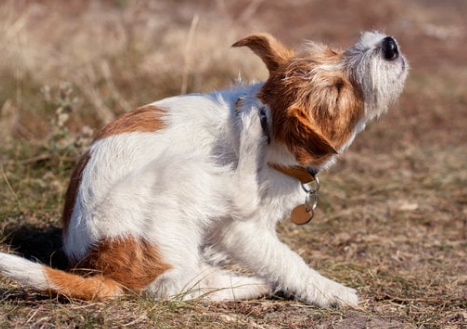
As the days grow longer and the weather warms up, it’s the perfect time for pets to enjoy the outdoors again. However, springtime also brings new risks that can pose dangers to your furry friends. From harmful plants to the increased activity of pests, it’s important to be aware of potential hazards so you can keep your pet safe. Here’s what to look out for this season:
1. Toxic Plants
Spring is a time for plants to bloom, but unfortunately, many popular spring plants can be toxic to pets. Common flowers like lilies, tulips, and daffodils can cause severe gastrointestinal issues or more serious conditions if ingested. Keep your pet away from any new plants you bring into your home, and be mindful of garden plants as well.
What to look for: Symptoms of poisoning may include drooling, vomiting, diarrhea, lethargy, or even organ failure in extreme cases.
What you can do: If you’re unsure about the plants in your home or garden, do a little research or ask your vet. Consider planting pet-safe flowers like marigolds, sunflowers, or snapdragons instead.
2. Fleas, Ticks, and Mosquitoes
With warmer weather comes an increase in the activity of fleas, ticks, and mosquitoes—pests that can be harmful to your pets. Fleas are not just a nuisance; they can lead to allergic reactions, anemia, and the spread of tapeworms. Ticks can carry Lyme disease and other dangerous illnesses, while mosquitoes are known to transmit heartworm disease.
What to look for: Fleas may cause itching, hair loss, or red spots on your pet’s skin. Ticks should be checked for regularly, especially after outdoor activities. Heartworm disease often shows up as coughing, fatigue, and weight loss.
What you can do: Use flea and tick prevention treatments recommended by Bishop Ranch Veterinary Center & Urgent Care. If you live in a high-risk area, make sure your pet is on heartworm prevention medication as well.
3. Lawn and Garden Chemicals
Spring is also the season when many people apply fertilizers, herbicides, or pesticides to their lawns and gardens. These chemicals, while effective for plant growth, can be harmful or even fatal if ingested by pets. Pets may lick chemicals off their paws after walking on treated grass or chew on plants that have been treated with chemicals.
What to look for: Symptoms of poisoning include drooling, vomiting, diarrhea, tremors, or even seizures.
What you can do: Always keep your pet away from treated areas for as long as recommended on the product label. Consider using pet-safe, organic gardening products to reduce risk.
4. Warm Weather Hazards
As temperatures rise, pets may become more active outdoors. However, warmer weather also brings the risk of heatstroke and dehydration, particularly for pets with thick fur or those who are not used to being outside for long periods. Heatstroke can occur quickly and be life-threatening.
What to look for: Signs of heatstroke in pets include excessive panting, drooling, lethargy, or disorientation. In severe cases, pets may collapse or vomit.
What you can do: Always ensure your pet has access to plenty of fresh water and shade when outdoors. Avoid walking or exercising your pet during the hottest part of the day, and never leave pets in a parked car, even for a few minutes.
5. Increased Wildlife Encounters
Spring is also when many animals are more active, and wildlife encounters can be more frequent. Pets may be curious about other animals like squirrels, raccoons, or even snakes. While it’s natural for your pet to want to chase or interact with wildlife, it’s important to be cautious. Wild animals can carry diseases like rabies, or your pet could be injured if a confrontation occurs.
What to look for: If your pet has been in contact with wildlife, watch for symptoms like unexplained wounds, swelling, or behavioral changes.
What you can do: Keep your pet on a leash during walks, and avoid areas known for wildlife activity. If your pet is scratched or bitten by a wild animal, contact Bishop Ranch Veterinary Center & Urgent Care immediately for advice on rabies and other potential infections.
What You Can Do to Keep Your Pet Safe This Spring
Spring is a wonderful time to get outside and enjoy the changing weather with your pets, but being aware of these seasonal hazards can help ensure their safety. Here are a few additional tips to keep in mind:
Regular Checkups: Ensure your pet is up to date on vaccinations, flea/tick preventatives, and heartworm medications.
Pet-Proof Your Home: Check your home and garden for any potentially harmful plants, chemicals, or other hazards.
Hydration and Shade: Always provide access to water and shade during outdoor activities.
Know the Signs: Familiarize yourself with the signs of heatstroke, poisoning, or pest infestations so you can act quickly if needed.
If you have any questions or concerns about your pet’s health this spring, don’t hesitate to reach out to us at Bishop Ranch Veterinary Center & Urgent Care. We're here to help ensure your pet enjoys a safe, healthy season!







